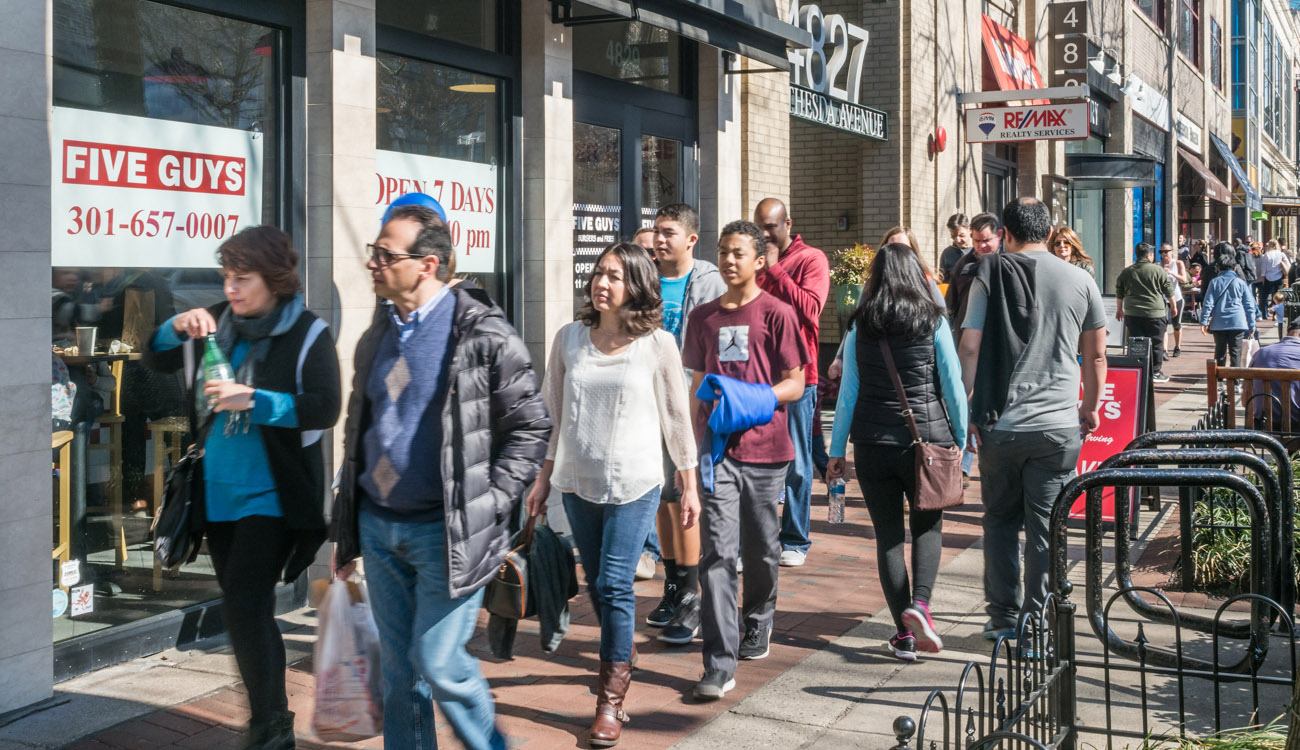The Bicycle and Pedestrian Areas (BiPPA) funding program is one of the primary ways that the county funds pedestrian and bicycle improvements. It was established by the County Council in 2014 to make comprehensive pedestrian and bicycle improvements around existing or future transit stations. Typical pedestrian improvements undertaken by this program include new sidewalks and sidepaths (10-foot-wide paths that are shared by pedestrians and bicyclists), Americans with Disabilities Act (ADA) improvements to sidewalks and curb ramps, crosswalks, and roadway changes to reduce motor vehicle travel speeds.
When the BiPPA program was initially developed, BiPPA areas tended to be nodes of pedestrian and bicycle activity around transit stations. Over time, new BiPPA areas have been created to address the pedestrian and bicycle challenges along some of the county’s major roadways, such as Veirs Mill Road and New Hampshire Avenue, and in some neighborhoods. However, prioritizing roadways and neighborhoods was undertaken based on the master plan schedule, not a comprehensive evaluation.
The 2023 Pedestrian Master Plan has changed the county’s approach to BiPPAs. The plan assigned every part of the county to one of three area types:
- Downtowns and Town Centers: These are the traditional BiPPA areas with land use and intensity of use supportive of significant pedestrian and bicycle activity. They match the proposed Complete Streets Design Guide area types identified in the following section.
- Major Roads: These are corridors throughout the county that tend to be the most problematic for pedestrians and bicyclists to navigate.
- Neighborhoods:These are the areas of the county outside of the Downtowns, Town Centers, or major roadways. They tend to be more residential in nature and typically have roadways that are more locally-oriented, slower speed, and carry less motor vehicle traffic.
Each part of the county was scored and prioritized in a data-driven way using the approach described in the Pedestrian Master Plan. The approach emphasizes additional investment in areas:
- with low levels of pedestrian and bicycle comfort
- near schools and transit stations
- with high pedestrian and bicycle demand
- with more pedestrian and bicycle crashes
Additional emphasis is given to those parts of the county that are EFAs to reflect the county’s commitment to investing in communities that have been historically disadvantaged. This emphasis is especially appropriate given that these areas are disproportionately where pedestrians are severely injured or killed, and people living in these areas are more likely to walk and bike, in addition to being less likely to own a motor vehicle.
BiPPAs are broken into several tiers in descending priority:
- Funded in Capital Budget
- Tier 1
- Tier 2
- Tier 3
- Tier 4
- Tier 5
- Tier 6
